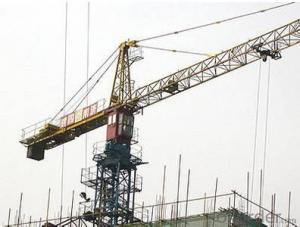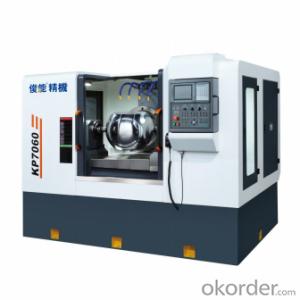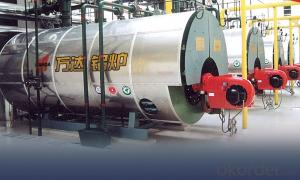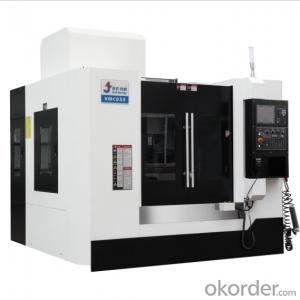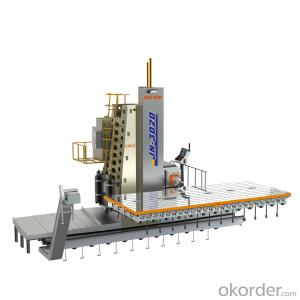Forged Wedge Coupling DN 125 with Hgh quality
- Loading Port:
- Tianjin
- Payment Terms:
- TT or LC
- Min Order Qty:
- 5 pc
- Supply Capability:
- 1000 pc/month
OKorder Service Pledge
OKorder Financial Service
You Might Also Like
Product Description:
Name:Forged Wedge Coupling DN 125 with Hgh quality
Type: Snap coupling, Bolt coupling, Wedge Coupling, adjustable or mounting type
Dimensions: DN125, 5"
Process: Casting or Forging.
Surface treatment: Painted or Galvanized.
Notes: total series of concrete pump clamp for different brand concrete pump(PUTZMEISTER, SCHWING, CIFA, SANY, ZOOMLION, IHI, KYOKUTO Etc) available from us, such as Snap coupling, Bolt coupling, Wedge Coupling, adjustable or mounting type .
Scope of Application of the Equipment
Forged Wedge Coupling DN 125 with Hgh quality widely used on concrete pump truck, concrete placing boom, trailer concrete pump etc, for concrete delivery pipe connection.
Our concrete pump clamps have been successfully exported to many countries from 1998, Our main markets as below: Middle East, Southeast Asia, America, Brazil, Italy, Russia, South Africa etc
Aiming at the largest concrete pump parts manufacturer, and reliable, professional supplier in China, we can supply concrete pump elbows, delivery pipes, casting or forging couplings, end rubber hoses, rubber pistons, tungsten wear plates, delivery cylinders, and other hydraulic parts, one stop service for your concrete pump parts and accessory business.
Product Advantages:
Forged Wedge Coupling DN 125 with Hgh quality are durable, strong, and resists corrosion.
Main Product Features:
· Premium quality
· Prompt delivery & seaworthy packing (10-20 days after receiving deposit)
Reliable performance
Easy and smooth operation
High safety.
· Professional Service
· Competitive pricing
Product Specifications:
Every 300pcs put in one seaworthy wooden box, and 20 boxes in one 20feet container.
FAQ:
Q1: Why buy Materials & Equipment from us?
A1: All products are through its ISO certifications, adhere to the highest standards and a commitment to supply chain safety and customer satisfaction.
Q2: How do we guarantee the quality of our products?
A2: We have established an advanced quality management system which conducts strict quality tests at every step, from raw materials to the final product. At the same time, we provide extensive follow-up service assurances as required.
Q3: How soon can we receive the product after purchase?
A3: Within three days of placing an order, we will begin production. The specific shipping date is dependent upon international and government factors, but is typically 10 to 30 workdays.
Q4: If we can produce some Forged Wedge Coupling DN 125 with Hgh quality according to customers request?
A4: Yes, we can produce Forged Wedge Coupling DN 125 with Hgh quality according to the difference country situations and different concrete pump to make it suitable to the market and customers. We have very professional technical team to make the design.
Q5: How to make a quick resolution for after service?
A5:We have overseas branches all-around of world, IF needed, the seller shall dispatch 2 engineers to the buyer's site for supervision of training. The buyer shall make available of necessary facilities &skilled personnel at site for training.
Images:
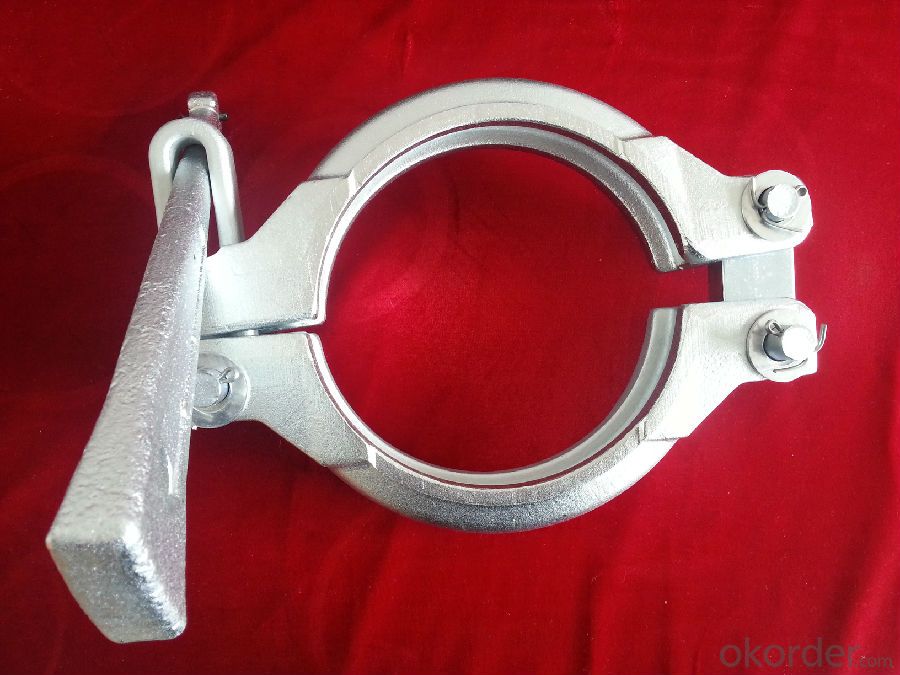
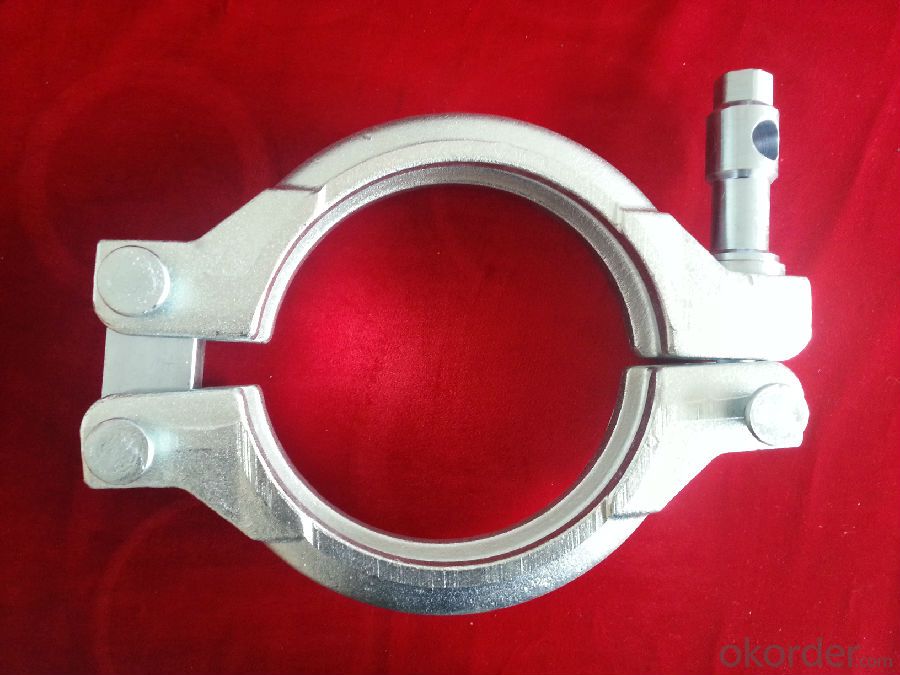
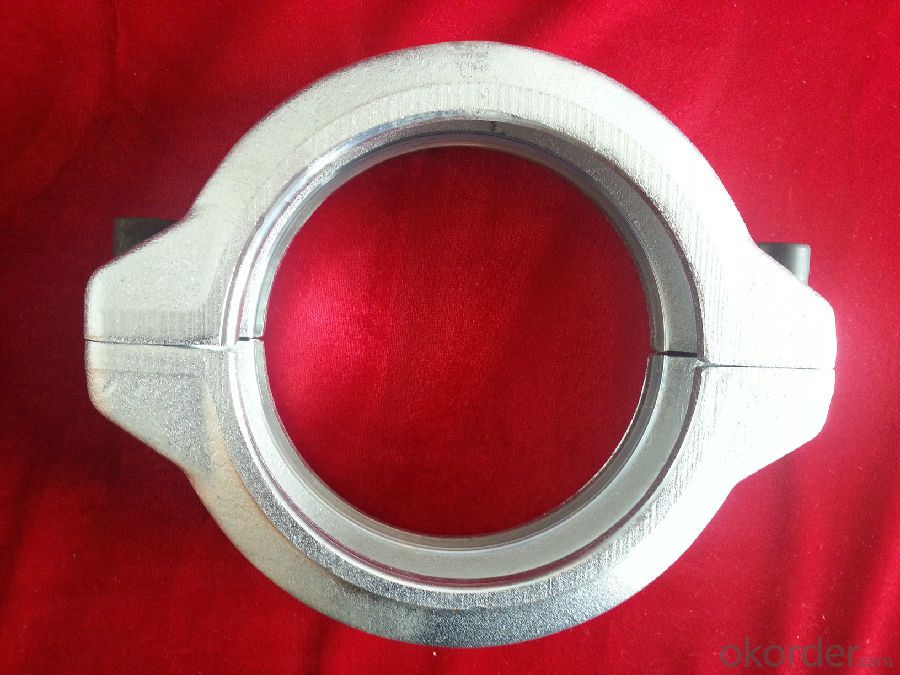

- Q:Are there any specific guidelines for the installation of pipe or hose assemblies in concrete pump spare parts?
- Concrete pump spare parts have specific guidelines for the installation of pipe or hose assemblies, which are crucial for the pump system's proper and safe functioning. To ensure this, here are some key guidelines to consider: 1. Size and Compatibility: The pipe or hose assemblies must be appropriate in size and compatible with the concrete pump system. They should meet the pump's specifications and be designed for the intended application. 2. Correct Alignment: It is essential to install the pipe or hose assemblies straight, without any kinks or bends that may restrict the flow of concrete or cause blockages, thus ensuring efficient operation. 3. Secure Connections: To prevent leaks or disconnections during operation, all connections, including fittings and couplings, should be securely tightened. It is advisable to use proper tools and techniques to ensure reliable and tight connections. 4. Support and Protection: Proper support and protection of pipe or hose assemblies are necessary to prevent damage or wear. They should be securely fastened to minimize excessive movement or vibration during pumping operations. 5. Clearances and Accessibility: Maintaining sufficient clearances between the pipe or hose assemblies and surrounding structures or equipment allows for easy inspection, maintenance, and replacement if necessary. 6. Proper Sealing: Suitable sealing materials should be used to properly seal all joints and connections. This is crucial for maintaining the pumping system's integrity and preventing any environmental or safety hazards caused by leakage. 7. Regular Inspection and Maintenance: Regularly inspecting the pipe or hose assemblies for signs of wear, damage, or degradation is important. Promptly addressing any issues ensures the continued safe operation of the concrete pump system. By following these guidelines, the proper installation of pipe or hose assemblies in concrete pump spare parts can be ensured, promoting safe and efficient concrete pumping operations. It is also advisable to consult the manufacturer's recommendations and refer to any specific guidelines provided with the spare parts.
- Q:How often should hopper vibrators be inspected or replaced in a concrete pump?
- Hopper vibrators in a concrete pump should be inspected regularly, ideally on a monthly basis, to ensure they are functioning properly. If any signs of wear, damage, or decreased performance are observed, it is recommended to replace them promptly to avoid any disruptions or issues during concrete pumping operations.
- Q:How often should hopper screens be cleaned or replaced?
- Hopper screens should be cleaned or replaced on a regular basis, typically every 3 to 6 months, depending on usage and the type of materials being processed. Regular cleaning of the hopper screens is essential to maintain optimal performance and prevent clogging or blockages. If the screens become excessively dirty or damaged, they should be replaced immediately to ensure uninterrupted flow of materials and prevent any potential damage to the equipment. Regular maintenance and inspections of the hopper screens will help to prolong their lifespan and ensure smooth operation of the entire system.
- Q:How can one determine the correct pressure and flow rating for hydraulic components in concrete pump spare parts?
- To determine the correct pressure and flow rating for hydraulic components in concrete pump spare parts, several factors need to be considered: 1. Manufacturer's specifications: Review the manufacturer's specifications for the hydraulic components. The specifications should include the recommended pressure and flow ratings for optimum performance and durability. 2. System requirements: Assess the specific requirements of the concrete pump system. Consider factors such as the size of the pump, the volume and distance of concrete being pumped, and the speed at which the concrete needs to be delivered. These factors will help determine the required pressure and flow rating for the hydraulic components. 3. Safety considerations: Ensure that the pressure and flow rating of the hydraulic components are within the safe operating limits of the concrete pump system. Exceeding these limits can lead to equipment failure, accidents, or damage to the components. 4. Compatibility: Verify that the hydraulic components are compatible with the rest of the system. The pressure and flow rating should match the capabilities and specifications of other components such as the pump, valves, and hoses to ensure proper functionality and performance. 5. Consultation with experts: If unsure about the appropriate pressure and flow rating for hydraulic components, consult with hydraulic system experts or the manufacturer's technical support team. They can provide guidance based on their expertise and experience with similar systems. It is important to note that the pressure and flow rating of hydraulic components may vary depending on the specific model, design, and intended application. Therefore, it is crucial to refer to the manufacturer's guidelines and recommendations to ensure accurate determination of the correct pressure and flow rating for hydraulic components in concrete pump spare parts.
- Q:How does a hydraulic oil cooler maintain optimal temperature in a concrete pump?
- In order to maintain the ideal temperature in a concrete pump and prevent potential issues, it is crucial to have a hydraulic oil cooler. The hydraulic system of a concrete pump is constantly exposed to high pressure and heavy loads, causing the oil within the system to heat up quickly. If the oil temperature exceeds the recommended range, it can lead to decreased efficiency, increased wear and tear, and even system failure. To avoid these problems, a hydraulic oil cooler is installed in the concrete pump. This cooler utilizes a heat exchanger to transfer the excess heat from the hydraulic oil to the surrounding air or another cooling medium, such as water or a refrigerant. This process effectively lowers the temperature of the hydraulic oil, keeping it within the optimal range for operation. The hydraulic oil cooler typically consists of fins or tubes that allow the hot oil to flow through. These fins or tubes increase the surface area of contact between the oil and the cooling medium, enabling efficient heat transfer. In some cases, a fan or pump may be used to enhance the airflow or flow of the cooling medium, further improving the cooling process. By maintaining the hydraulic oil at the ideal temperature, the hydraulic oil cooler ensures that the concrete pump operates at its highest level of performance. This not only increases the overall efficiency and productivity of the pump but also extends the lifespan of critical components. Additionally, by preventing overheating, the hydraulic oil cooler helps to minimize the risk of unexpected downtime and costly repairs. In conclusion, a hydraulic oil cooler is an essential component in a concrete pump as it effectively dissipates excessive heat from the hydraulic oil, ensuring optimal temperature and contributing to the overall productivity and reliability of the pump.
- Q:What are the signs of a malfunctioning gearbox?
- There are several signs that can indicate a malfunctioning gearbox in a vehicle. One of the most common signs is difficulty shifting gears. If you notice that it is becoming increasingly difficult to shift gears smoothly or if you experience grinding or clunking noises when shifting, it could be a sign of a problem with the gearbox. Another sign of a malfunctioning gearbox is slipping gears. This occurs when the gearbox fails to stay in the selected gear and instead slips into a different gear, often resulting in a loss of power or acceleration. You may also notice that the engine RPMs increase without a corresponding increase in speed. Leaking transmission fluid is another indicator of a faulty gearbox. Transmission fluid is essential for lubricating and cooling the gears, so any leakage can lead to overheating and damage to the gearbox components. If you notice red or brown fluid underneath your vehicle, it could be a sign of a leaking gearbox. Unusual noises, such as whining, humming, or clunking sounds, can also be a sign of gearbox issues. These noises may occur while driving, particularly during acceleration or deceleration, and can indicate problems with the gears or bearings within the gearbox. Finally, if you experience a burning smell coming from the engine or gearbox area, it could be a sign of overheating or excessive friction within the gearbox. This can be caused by low or contaminated transmission fluid, worn-out gears, or a malfunctioning cooling system. If you notice any of these signs, it is important to have your vehicle inspected by a qualified mechanic as soon as possible. Ignoring gearbox issues can lead to further damage and potentially costly repairs.
- Q:Are there any warranties or guarantees available for concrete pump spare parts?
- Yes, there are warranties and guarantees available for concrete pump spare parts. Many manufacturers and suppliers offer warranties to ensure the quality and performance of their products. These warranties typically cover defects in materials or workmanship and provide a certain period of coverage, usually ranging from a few months to a year or more. Additionally, some suppliers may offer guarantees on the performance or durability of their spare parts, providing assurance and peace of mind to the customers. It is always recommended to inquire about the specific warranty or guarantee terms before purchasing concrete pump spare parts to ensure that you are protected in case of any issues.
- Q:Are there any specific guidelines for the storage and handling of concrete pump spare parts during transportation?
- Concrete pump spare parts must be stored and handled according to specific guidelines during transportation to ensure safety and efficiency, as well as minimize the risk of damage or loss. To begin, it is crucial to package and protect the spare parts properly. This entails using suitable materials like cardboard boxes, bubble wrap, or foam padding to prevent any physical harm during transit. The spare parts must be securely packed to prevent any movement or shifting during transportation. Furthermore, it is advisable to clearly label the packages with the contents and any specific handling instructions. This will aid transport personnel in correctly handling the spare parts and avoiding mishandling or confusion. Moreover, it is essential to select a trustworthy and experienced transportation service provider who specializes in delicate and sensitive items such as concrete pump spare parts. They should possess the necessary equipment, such as pallet jacks or forklifts, for safe handling and movement of the spare parts. During transportation, it is vital to ensure that the spare parts are loaded and secured properly in the transport vehicle. This may involve using straps, ropes, or other securing devices to prevent any movement or shifting of the packages. Regarding temperature control, it is important to consider the specific requirements of the spare parts. Some parts may be sensitive to extreme temperatures and necessitate special handling or climate-controlled transportation. Consulting with the manufacturer or supplier of the spare parts is crucial to determine any specific temperature or climate requirements. In conclusion, adhering to these guidelines will guarantee the secure and safe transportation of concrete pump spare parts, reducing the risk of damage or loss and ensuring their readiness for use upon arrival at their destination.
- Q:Are there any specific safety precautions for handling concrete pump spare parts?
- Yes, there are specific safety precautions that should be followed when handling concrete pump spare parts. Firstly, it is important to wear appropriate personal protective equipment (PPE) such as gloves, safety goggles, and a dust mask to protect against any potential hazards. Concrete dust can be harmful if inhaled or comes into contact with the skin, so it is important to take necessary precautions. When handling concrete pump spare parts, it is crucial to ensure proper lifting techniques are used to avoid strains or injuries. Heavy parts should be lifted with the help of lifting equipment or with the assistance of others to minimize the risk of accidents. Additionally, it is important to handle the spare parts with care and avoid any rough handling or dropping, as this can lead to damage or breakage. Damaged spare parts can affect the overall performance and safety of the concrete pump. Furthermore, it is recommended to store the spare parts in a clean and dry area, away from any moisture or chemicals that could potentially damage them. Proper storage will help maintain the quality and integrity of the spare parts. Lastly, it is always advised to follow the manufacturer's instructions and guidelines when handling concrete pump spare parts. They often provide specific safety precautions and recommendations that should be followed to ensure the safe handling and use of the parts. By following these safety precautions, the risk of accidents, injuries, and damage to the concrete pump spare parts can be minimized, ensuring a safe working environment.
- Q:How to deal with the blockage in the outlet of the distributing valve of the concrete pump?
- If this method does not dare, it can only be manually removed, remove the connecting pipe, remove the debris in the valve.
1. Manufacturer Overview |
|
|---|---|
| Location | |
| Year Established | |
| Annual Output Value | |
| Main Markets | |
| Company Certifications | |
2. Manufacturer Certificates |
|
|---|---|
| a) Certification Name | |
| Range | |
| Reference | |
| Validity Period | |
3. Manufacturer Capability |
|
|---|---|
| a)Trade Capacity | |
| Nearest Port | |
| Export Percentage | |
| No.of Employees in Trade Department | |
| Language Spoken: | |
| b)Factory Information | |
| Factory Size: | |
| No. of Production Lines | |
| Contract Manufacturing | |
| Product Price Range | |
Send your message to us
Forged Wedge Coupling DN 125 with Hgh quality
- Loading Port:
- Tianjin
- Payment Terms:
- TT or LC
- Min Order Qty:
- 5 pc
- Supply Capability:
- 1000 pc/month
OKorder Service Pledge
OKorder Financial Service
Similar products
New products
Hot products
Related keywords
















